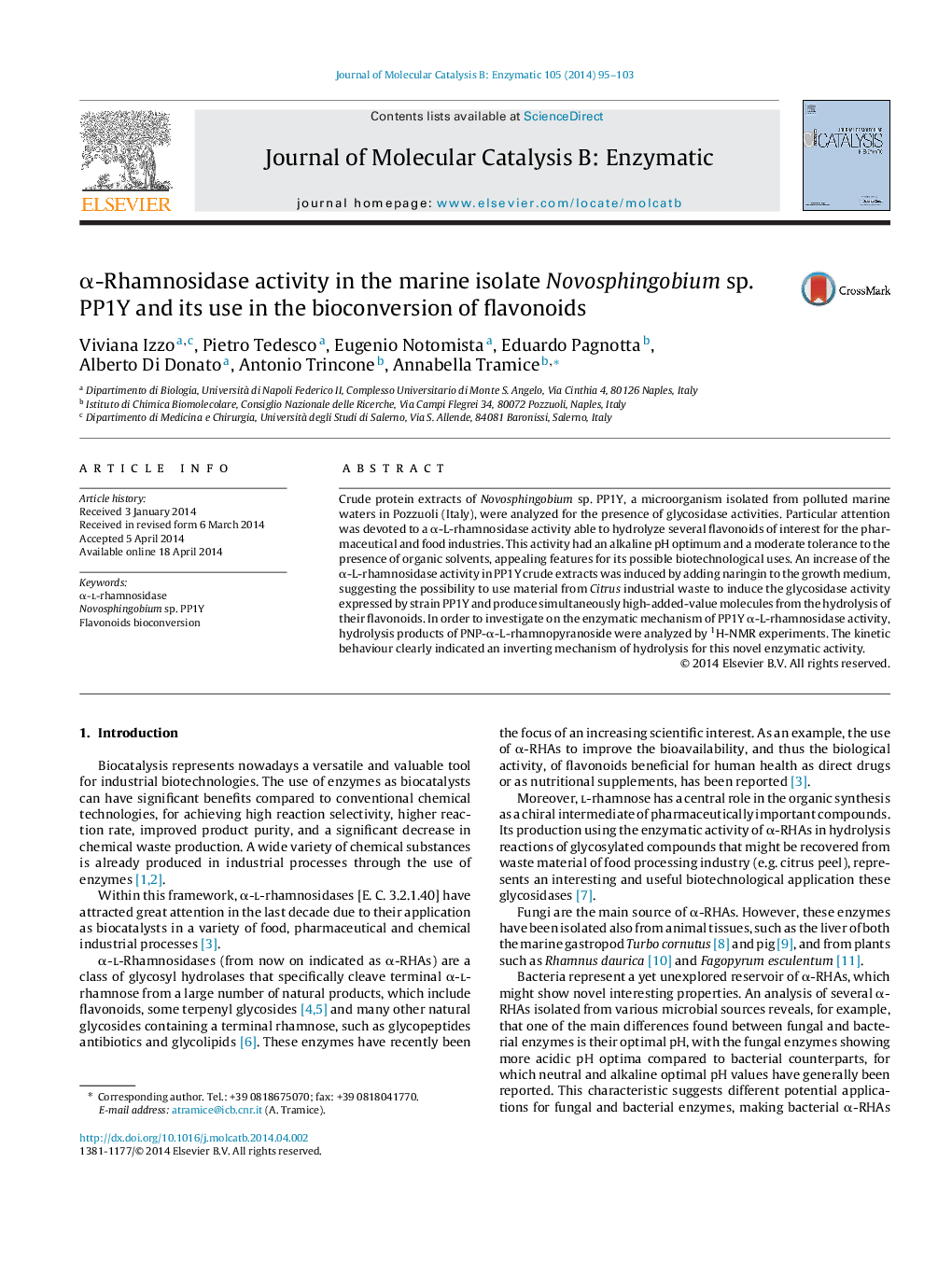| کد مقاله | کد نشریه | سال انتشار | مقاله انگلیسی | نسخه تمام متن |
|---|---|---|---|---|
| 69836 | 48795 | 2014 | 9 صفحه PDF | دانلود رایگان |

• PP1Y cell extracts were tested for the glycosidase activities presence.
• The naringin use as inducer of the α-RHA activity in PP1Y growth was investigated.
• This α-RHA showed an alkaline pH optimum and a certain organic solvents tolerance.
• PNP-α-L-Rha hydrolysis followed by 1H-NMR secured the inverting α-RHA mechanism.
• Bioconversion studies of flavonoidic compounds were performed.
Crude protein extracts of Novosphingobium sp. PP1Y, a microorganism isolated from polluted marine waters in Pozzuoli (Italy), were analyzed for the presence of glycosidase activities. Particular attention was devoted to a α-L-rhamnosidase activity able to hydrolyze several flavonoids of interest for the pharmaceutical and food industries. This activity had an alkaline pH optimum and a moderate tolerance to the presence of organic solvents, appealing features for its possible biotechnological uses. An increase of the α-L-rhamnosidase activity in PP1Y crude extracts was induced by adding naringin to the growth medium, suggesting the possibility to use material from Citrus industrial waste to induce the glycosidase activity expressed by strain PP1Y and produce simultaneously high-added-value molecules from the hydrolysis of their flavonoids. In order to investigate on the enzymatic mechanism of PP1Y α-L-rhamnosidase activity, hydrolysis products of PNP-α-L-rhamnopyranoside were analyzed by 1H-NMR experiments. The kinetic behaviour clearly indicated an inverting mechanism of hydrolysis for this novel enzymatic activity.
Figure optionsDownload as PowerPoint slide
Journal: Journal of Molecular Catalysis B: Enzymatic - Volume 105, July 2014, Pages 95–103